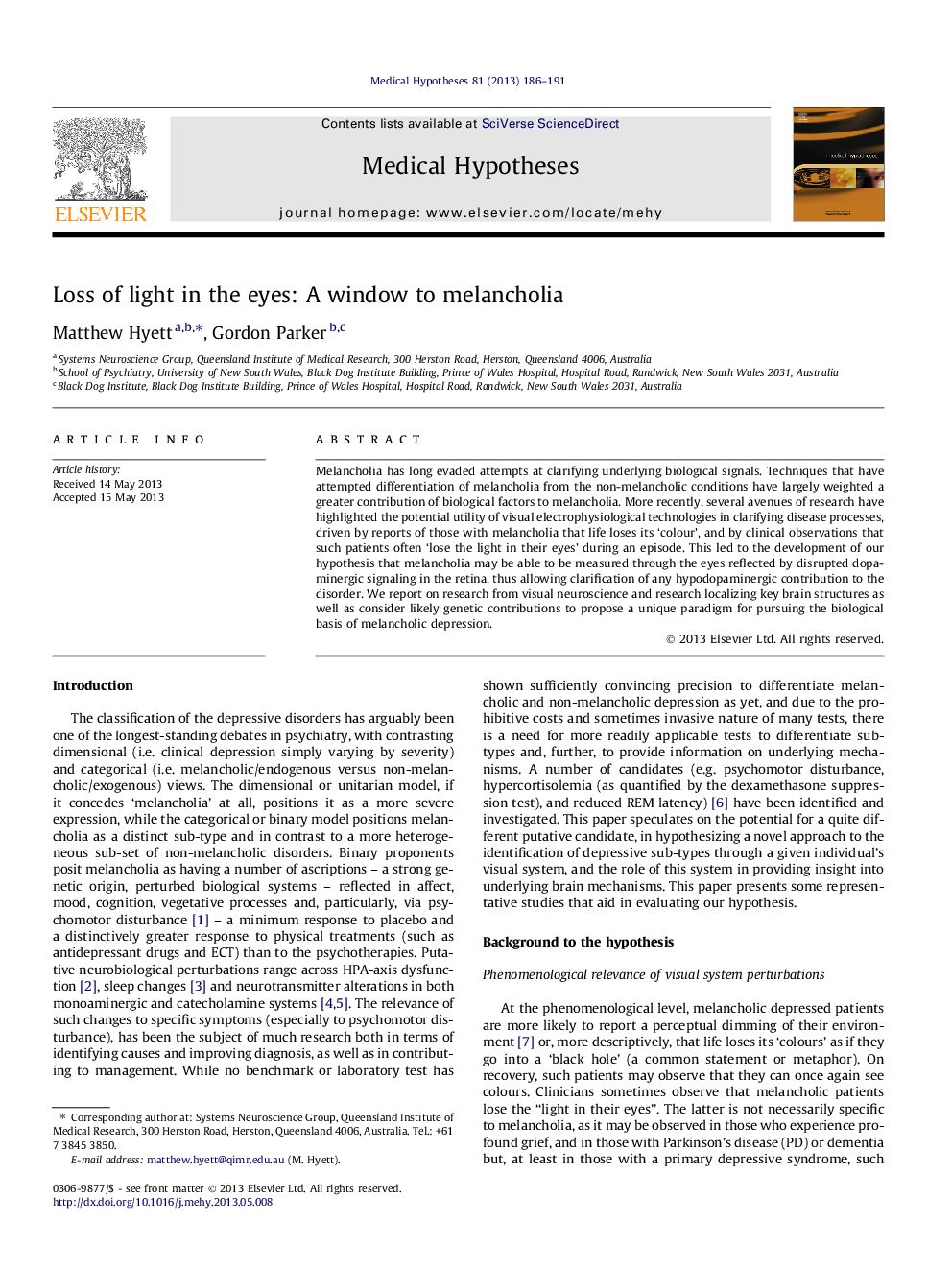| Article ID | Journal | Published Year | Pages | File Type |
|---|---|---|---|---|
| 2489087 | Medical Hypotheses | 2013 | 6 Pages |
Melancholia has long evaded attempts at clarifying underlying biological signals. Techniques that have attempted differentiation of melancholia from the non-melancholic conditions have largely weighted a greater contribution of biological factors to melancholia. More recently, several avenues of research have highlighted the potential utility of visual electrophysiological technologies in clarifying disease processes, driven by reports of those with melancholia that life loses its ‘colour’, and by clinical observations that such patients often ‘lose the light in their eyes’ during an episode. This led to the development of our hypothesis that melancholia may be able to be measured through the eyes reflected by disrupted dopaminergic signaling in the retina, thus allowing clarification of any hypodopaminergic contribution to the disorder. We report on research from visual neuroscience and research localizing key brain structures as well as consider likely genetic contributions to propose a unique paradigm for pursuing the biological basis of melancholic depression.
